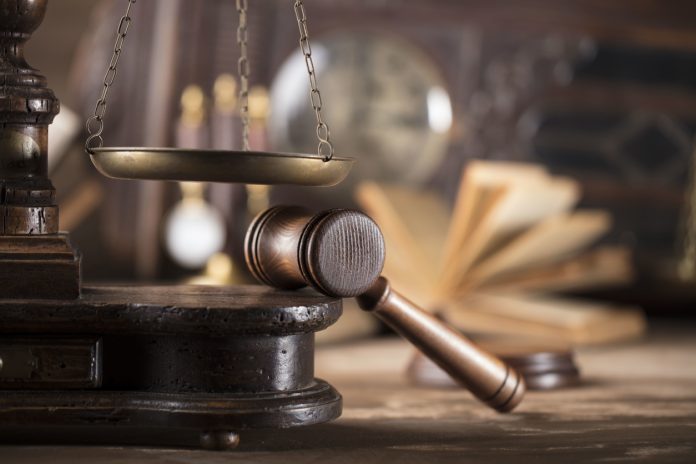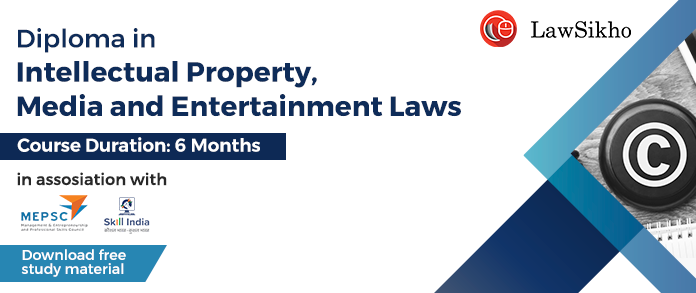This article is written by Raslin Saluja, from KIIT School of Law, Bhubaneswar. This article throws light on the various stances taken by the U.S Supreme Court in deciding the claims involving the favourable termination rule.
Table of Contents
Introduction
Even after 27 years of the rule of favourable termination, many ambiguities surround its application. The answer to the question, whether a plaintiff has to prove his innocence in a way that he was officially discharged of the conviction before initiating a suit against the police for fabricating evidence against him in a criminal case, is not yet known. This had led to years of struggle by the lower courts on whether or not the Heck”s rule should be applied if a plaintiff has no other option to get relief.
If you were to be a victim of such wrongful misconduct and imagine yourself to have spent many years in prison merely because of a tainted conviction and malicious prosecution on the part of the police officials, what would be your stance? This is exactly the concern of this article wherein we discuss the various nuances revolving around the rule of favourable termination and its disputed implementation by the Supreme Court.
What is meant by “favourable termination”?
The rule of favourable termination requires a defendant who is willing to sue the cops or the prosecutor to demonstrate before the court his innocence either through a trial or an overturned conviction. This rule came from the case of Heck v. Humphrey, in 1994, wherein the Supreme Court established that a plaintiff cannot file a civil suit for wrongful conviction unless his or her conviction was “favourably terminated”. It stated that for a plaintiff to bring such a claim, he has to prove that the criminal proceedings were terminated in his favour. Since then this rule has been made the set standard of innocence in cases of malicious prosecution against police officials.
Heck v. Humphrey (1994)
The facts of the case were that Roy Heck was convicted of voluntary manslaughter in the state of Indiana for murdering his wife. Before opting for other state remedies, he initiated a suit under Section 1983 alleging that the state official and the police had infringed his constitutional rights. These accusations were sufficient for a claim under the writ of habeas corpus. However, Roy only claimed damages. His claim was dismissed by the district court since it implicated the legality of his confinement and his appeal was affirmed by the Seventh Circuit and the Supreme Court. The issue was framed as “whether money damages premised on an unlawful conviction could be pursued under Section 1983.”
The conclusion was that Section 1983 and the habeas statute intersect only concerning individuals who can invoke habeas jurisdiction. That a defendant cannot claim damages for an allegedly unconstitutional conviction without showing that it has been overturned in some way. Further, they must also exhaust other state court remedies before suing under Section 1983.
Under 42 United States Code (U.S.C) Section 1983 empowers a plaintiff to file a suit against the state for unconstitutional denial of upholding the rights. A plaintiff can use Section 1983 to challenge a conviction or sentence in a federal forum against the state for violating his federally protected rights. Though this section has a wide interpretation, the Supreme Court has set certain limitations upon its exercise in specific circumstances. This limitation comes in the form of a restriction that is imposed on a plaintiff’s ability to challenge the unfair conviction which came to be known as “the Heck’s rule”. This rule prevented the plaintiffs from having access to a federal remedy against the state officeholders for deprivation of their constitutional rights. Thereby, Section 1983 could not serve its purpose of protecting such individuals who relied on it.
This has been controversial because three other circuits along with Third Circuit continue to follow this approach however other seven circuits stated that this rule cannot be applied in cases where a plaintiff has already exhausted the available remedies and has no other forum to run back to.
The US court’s pattern
The decision in Heck left several questions unresolved. Did the majority intend to bar only claims like Roy Heck’s that remain properly cognizable in a habeas suit? Or does Heck bar convicted criminals who are no longer detained, or for whom habeas remedies are otherwise no longer available, from seeking relief under Section 1983?
This decision was also questioned in the case of Spencer v. Kemna (1998), where five justices adopted the concurring opinion of Justice Souter where he stated that there should be an exception to the favourable under causes termination rule if the plaintiff is left with no remedy. Further how the rule would still apply if there is no intersection between the Section 1983 and habeas corpus statute. For those who are not in custody, they only have one avenue which is to claim under Section 1983 challenging the constitutionality of the conviction and therefore the federal court cannot prevent such a plaintiff from taking action because it would go against the very intention of the statute.
Later in 2014, this rule was again applied in the case of Deemer v. Beard (2014), by the U.S Court of Appeals for the Third Circuit appeal, where the plaintiff had exhausted all his options for state and federal remedies. In this case, Deemer initiated a case under Section 1983 against a former secretary of Pennsylvania Department of Correction and other officials involved in his conviction. His case was that his imprisonment was extended beyond its expiration. In 2007 he was granted parole but was arrested on a separate charge for a drug violation in New Jersey which was then eventually dismissed. Following his return, he was then given maximum imprisonment on his conviction by adding on the days he did not serve before his parole release.
He then appeared before the Parole Board that his imprisonment in New Jersey is adjusted in the remaining sentence left to be served here. This appeal was dismissed and then remained pending till 2010. When he petitioned for habeas corpus, it remained moot since his sentence was ended. He then sought damages by suing under Section 1983 against the defendants and contended infringement of his constitutional rights under the Eighth and Fourteenth Amendment for extending the sentence.
To this, the defendants contended that by virtue of Heck rule the plaintiff is prevented from moving forward to which the plaintiff replied that he tried all possible avenues before finally resorting to this plea. However, the U.S Court of Appeals for the Third Circuit was not persuaded and cited the case of William v. Consovoy (2002), as precedent for application of Heck’s rule even if Deemer has no other remedy at his disposal and that the rule applied equally in all such cases. Furthermore, even a petition of certiorari filed was denied by the Supreme Court which reflected the Court’s approval of the circuits undermining and ignoring the precedent. Thus the four remaining circuit courts including the Third Circuit still interpreted the rule as a universal requirement.
The conundrum
Usually, the cases of wrongful conviction involve two types of police misconduct like concealing favourable evidence of the defence and fabricating evidence. Such cases have huge constitutional claims of serious nature since the officers abuse the legal process and violate the Fourth Amendment rights of an individual while charging them with a crime they have not committed.
Though the Supreme Court declined to review the Deemer judgment, it is frequently argued that the circuit split must be resolved quickly and an exception must be allowed since it is a denial of the plaintiff’s right to impose the Heck rule upon the prisoners who have already exhausted or left with no forum to seek redressal. Their desire to achieve freedom from a corrupted conviction is outright justified in pursuance of their right to redress for a constitutional violation. Thus the issue has an obvious significance however the circuit courts still remain split on whether there are any exceptions to this heck rule.
Initially, a three-judge panel had recognized a very wide exception to it which was an absolute right to file suit under Section 1983 which is if a person is no longer in custody and therefore has no remedy in habeas. However, in such a case what does one do where the plaintiff was never convicted and the charges were dropped.
The issue with the system
The Heck rule requires the sentence to be either reversed on direct appeal, cancelled by executive order, declared invalid by an authorized state tribunal, or be called in question by a habeas corpus issuance. To bring a claim under Section 1983, the plaintiff has to make sure that he proves the sentence has been nullified in his favour through any of the abovementioned possibilities. The rationale behind this requirement was to prevent the plaintiff from making a collateral attack against his conviction. Hence the main issue is that this also applies to a plaintiff who has no other remedy left except to claim damages under Section 1983. This has led to a conflicted stance on the interpretation of the Court’s ruling in the Humphrey case and whether an exception to the favourable termination rule exists or not for plaintiffs with no relief.
The present situation
Presently a review has been granted by the justices in the case of Thompson v. Clark (2020), involving the favourable termination rule, to decide whether the rule in question requires a plaintiff to show that the criminal proceedings ended in a way that is “not inconsistent” with his innocence, or whether the plaintiff must instead meet a higher bar and show that the proceeding ended in a way that affirmatively shows his innocence.
The facts of the case involved Larry Thompson, a New York man who was charged with resisting arrest and obstructing governmental administration when he declined to allow police to enter his home, late at night and without a warrant, to examine his infant daughter for possible child abuse. Four New York Police Department (NYPD) officers had responded to a 911 call from the sister of Thompson’s fiancée at around 10 P.M from the Thompson residence in 2014. Thompson’s sister-in-law, according to documents submitted in the court, is also known to suffer from “cognitive delays”. However, his fiancee’s sister had mistaken diaper rash for hints of child abuse and when the Emergency Medical Technician (EMTs) took the baby to the hospital, diaper rash was determined.
Thompson did not allow the officers inside his apartment to which he was handcuffed and manhandled. He repeatedly denied that he had done anything wrong and refused offers to settle the case without going to trial. However later he was escorted out of his building and was jailed for two days. After a few months, the case was eventually dismissed with no compromise or plea, telling the trial court that the “people are dismissing the case in the interest of justice.”
Later when his case of malicious prosecution went to trial, the sued police officers argued that for purposes of the favourable-termination rule, the dismissal of his case did not affirmatively demonstrate that Thompson was innocent. To which Thompson countered that it was enough that the charges against him were dismissed. Bound by the 2018 precedent, the district court and the U.S. Court of Appeals for the Second Circuit sided with the police officers. Thompson came to the Supreme Court in November 2020, asking the justices to weigh in. Finally, they agreed to do so.
The case will be argued in the coming fall i.e the early next term in October 2021-2022 term, till then the petition remains pending.
Conclusion
Though the said rule was adopted to prevent prisoners from challenging their conviction through civil means after the exhaustion of other remedies in criminal courts, the court was mostly concerned about the potential discrepancies for cases where the conviction was not favourably terminated. However, these concerns lose ground as soon as the inmate is released. Despite this flexibility, the rule continued to be applied to those who were not in state custody with no other means to challenge. Thus the court’s approach of not explicitly interpreting the issue has led it to unfairly deny relief to many such individuals.
A continuation of the court’s ways in interpreting the rule has furthered constitutional rights infringements counteracting the purpose of Section 1983. For all these reasons mentioned above, the Supreme Court must address the split in the decision and reinterpret the favourable termination rule excluding plaintiffs who are in the custody of the state. Until the courts reinterpret the boundaries of the Heck rule, the appellate cannot and must not restrict its applicability. Further disregard mustn’t take place and the court’s reach a justified and fair decision on it. To promote the principles on which Section 1983 stands, the court should allow the plaintiff to access and create an exception regarding the same to prevent further violation of the plaintiffs’ rights.
References
- https://www.jurist.org/news/2021/03/us-supreme-court-takes-up-favorable-termination-case-rejects-trumps-final-election-challenge/
- https://www.scotusblog.com/2021/03/justices-to-take-up-favorable-termination-rule/
- https://nahmodlaw.com/2021/01/18/what-is-favorable-termination-where-there-is-no-conviction/
- https://lawdigitalcommons.bc.edu/bclr/vol56/iss6/6/
LawSikho has created a telegram group for exchanging legal knowledge, referrals, and various opportunities. You can click on this link and join:
https://t.me/joinchat/J_0YrBa4IBSHdpuTfQO_sA
Follow us on Instagram and subscribe to our YouTube channel for more amazing legal content.
 Serato DJ Crack 2025Serato DJ PRO Crack
Serato DJ Crack 2025Serato DJ PRO Crack











 Allow notifications
Allow notifications



